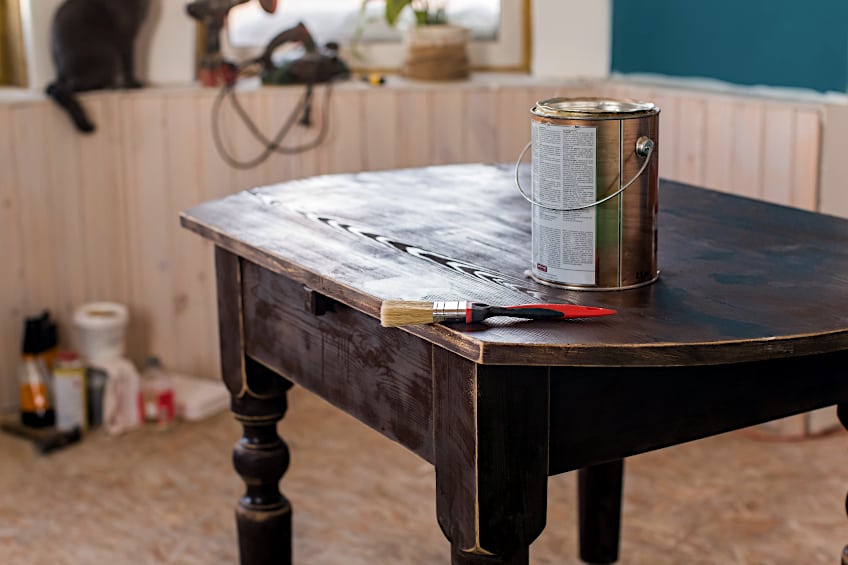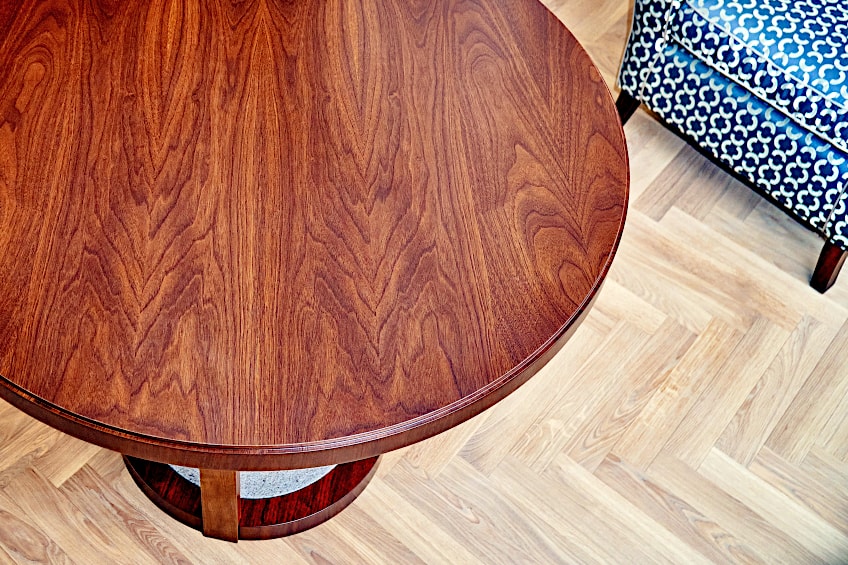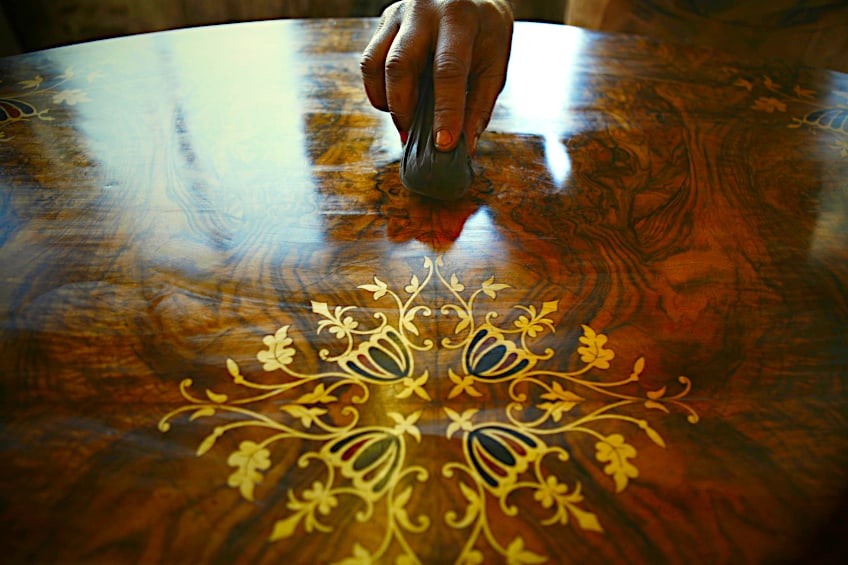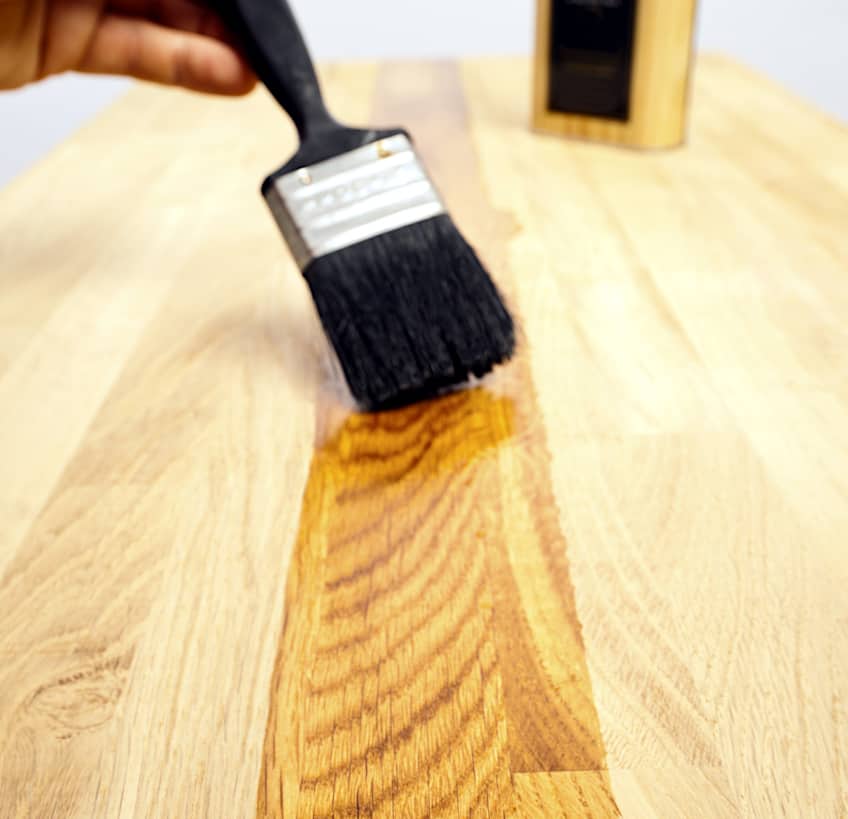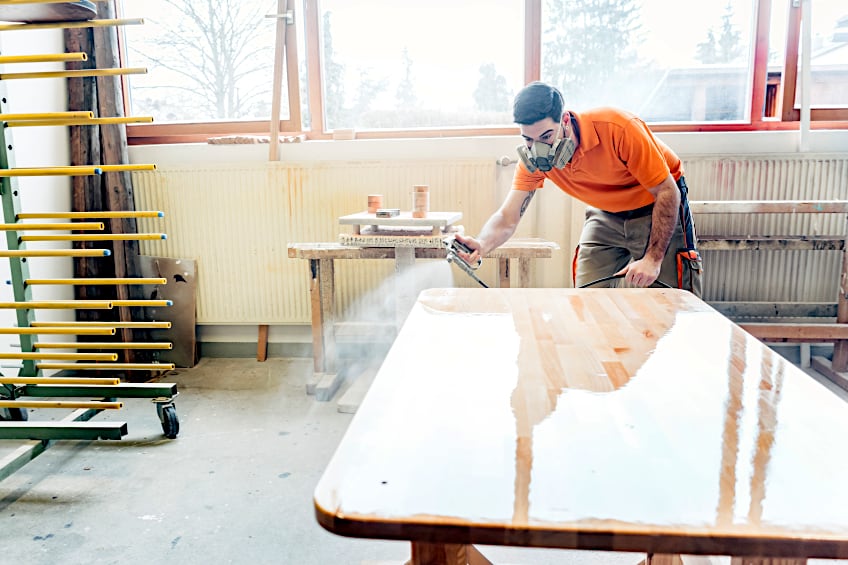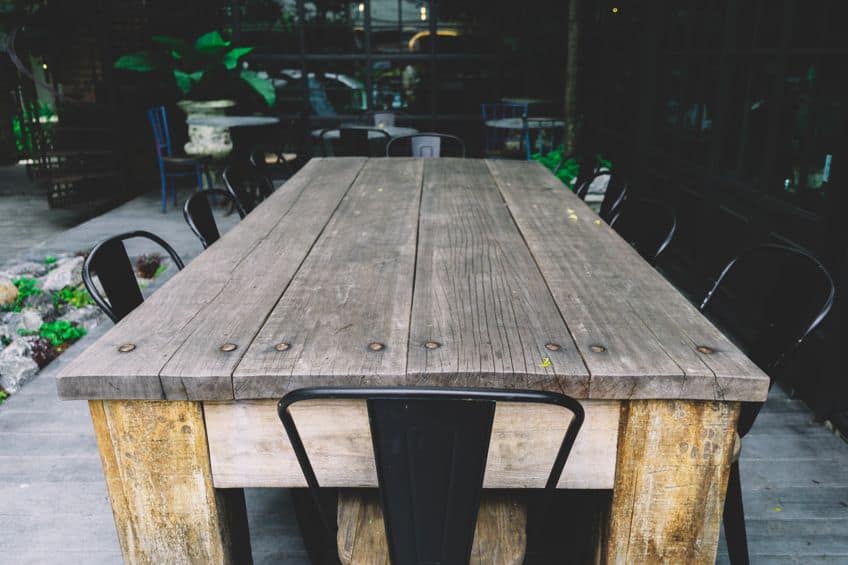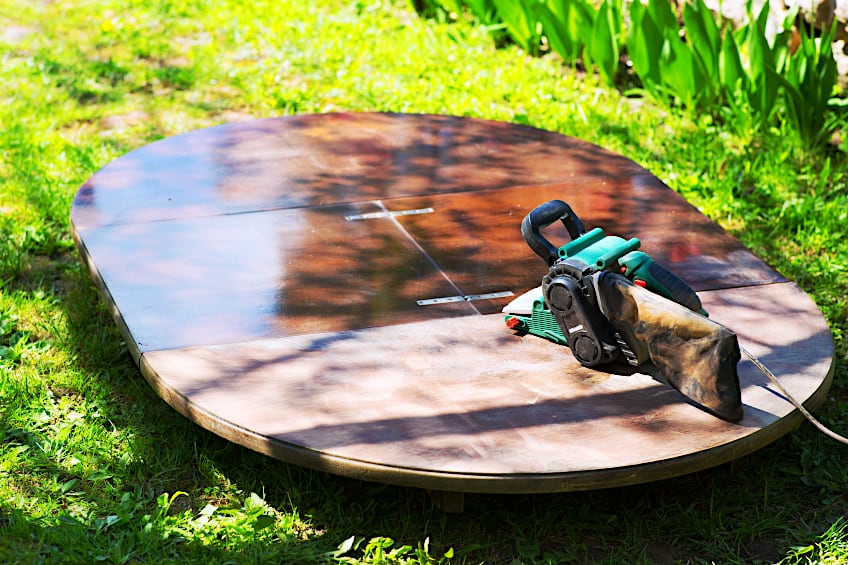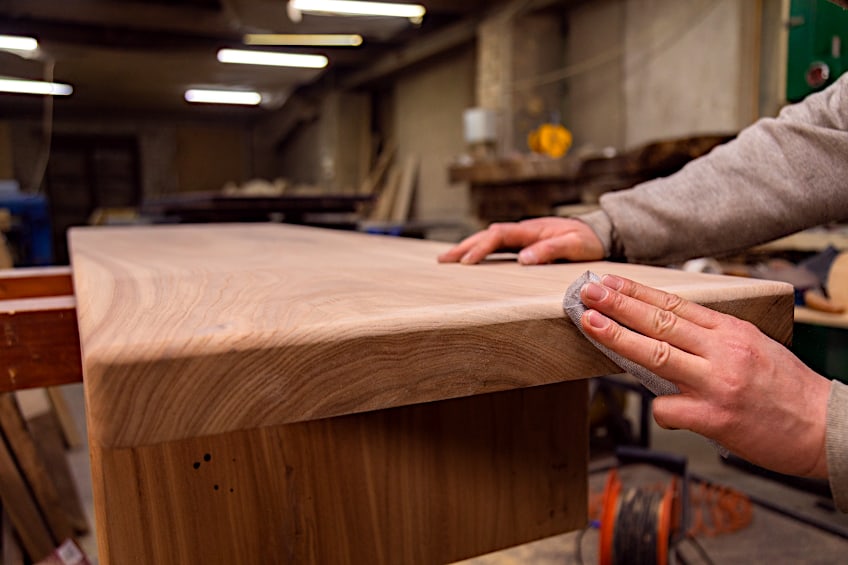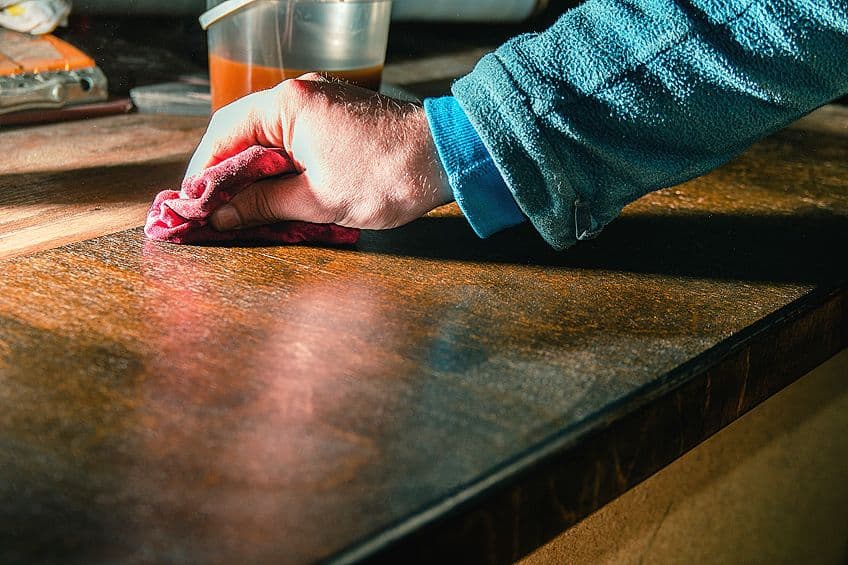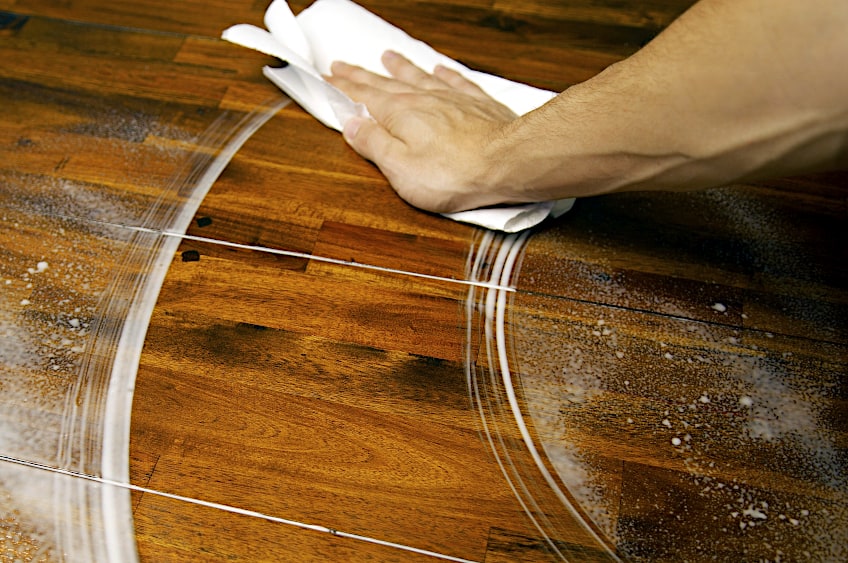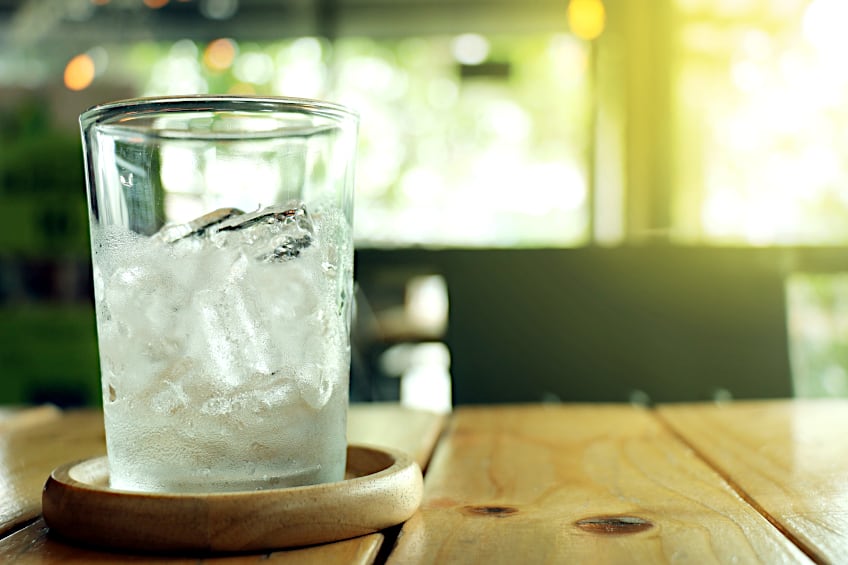How to Protect Wood Tables – Wooden Surface Sealing Guide
This post may contain affiliate links. We may earn a small commission from purchases made through them, at no additional cost to you. You help to support resin-expert.com
So, you have just gotten your hands on a freshly made wooden table and are excited to use it. Stop! It is crucial that you understand how to protect wood tables from different types of stains, and it would also help if you understood the different types of wood finishes available. There is also a fair bit of upkeep that goes into keeping your table in pristine condition. Below, we will explore the techniques to help you keep your wood table in the best condition.
Table of Contents
Importance of Wood Table Protection
Over time your dining table will display various indications of wear and tear. Fortunately, there are many easy things you can do regularly to safeguard your table against aesthetic and structural harm.
Not only are these quick steps, but they will ensure that your table not only survives for a while but also stays in excellent condition.
The reality is that wood tables are not cheap and it would be best to take care of the one that you have to ensure that it lasts a long time. While some would argue that you could purchase a glass table and call it a day, it does not have the same classic appeal that you would get from wood. Hence, learning how to protect wood tables from different types of damage is crucial.
Benefits of Maintaining Wood Tables
When shopping for a dining room table, it is critical to consider the material utilized to construct the table. We suggest that you choose a sturdy wood dining table to ensure that it will last a long period. Solid wood’s structural strength is due to its firmly packed fibers. Tables constructed of less expensive materials, such as plywood, MDF, and particleboard, can droop over time; however, real wood will remain firm and can last for generations if properly cared for.
Nonetheless, a wooden table may be robust, but it is a natural object that must be properly cared for. By doing this, you will guarantee that it endures the test of time and maintains its lovely appearance. There are a variety of methods for doing this. This includes regular cleaning and applying different types of oils. However, using a wood sealant will make the process much easier.
Choosing the Right Finish
There are numerous distinct wood treatments on the market and it can be difficult to choose which one is best for your surface. Choosing the correct wood finish for your table might be the distinguishing factor between an effective and messy outcome.
Importance of Finishes
There are two reasons for finishing wood, for an enhanced aesthetic and for the protection that comes with using it. Finishes can be sourced in a range of colors and viscosities, with each one presenting distinct qualities. It is important to understand that some finishes will not work with certain types of wood.
Different Types of Wood Finishes
From wax to varnish, there are different types of surface finishes that will protect the surface of your table. If you want to learn how to protect wood tables from moisture, UV rays, abrasion, and so on, then it would be a good idea to understand the different types of finishes featured below.
Wax Finishes
Wax finishes are among the most straightforward methods of protecting furniture from friction and deterioration. They are simple to apply and provide adequate protection from scuffs and scratches.
Keep in mind that wax finishes do not last very long and require regular reapplication.
They may also get dull over time and require buffing to restore their luster. This finish comes in a range of compositions, such as cream waxes, paste waxes, and liquid waxes. They may all be applied using a brush, cloth, or spray.
Oil Finishes
Oil finishes will penetrate the wood and there are different types of them available with the most common being linseed oil. Obtained from flax seeds, linseed oil has been used as a wood finish as well as a protective covering for metal. Linseed oil penetrates deeply into the pores of the lumber, resulting in a long-lasting and durable finish.
It is also extremely water resistant, making it perfect for exterior use. Furthermore, it is biodegradable and incapable of releasing dangerous chemicals into the environment. This oil ranks as one of the best eco-friendly oil-based options for synthetic finishes.
Other oil finishes include tung, cedar, and Danish oil.
Polyurethane Finishes
Polyurethane is a fantastic technique to preserve wood surfaces against water damage as well as wear and tear. Its warm, amber tone is also great for complementing the natural beauty of wood.
One major disadvantage of polyurethane is that it is tough to fix if it gets damaged.
For optimal results, use a natural bristle brush when applying polyurethane to storage units, doors, furnishings, or floors. To obtain the ideal style for your house, you may also pick between high-gloss and satin finishes.
Varnish Finishes
Varnish serves as one of the most effective wood treatments available. It not only gives the surfaces of your belongings a high-gloss finish, but it also protects them against scratches, water damage, and stains.
While varnish comes in a range of colors, it is usually transparent or has little to no color. This makes it suitable for individuals who wish to keep their wood’s natural appearance.
You will need to utilize spray guns or natural brushes to apply varnish. Brushing, on the other hand, might be tough and needs a bit of skill. If you are unsure about your ability to apply varnish uniformly by brush, stick to spraying. In general, varnish is a great option for people looking to protect any wood surfaces.
Pros and Cons of Each Type of Finish
Each finish comes with different pros and cons. To make it easier for you to determine which one would be best suited for your wooden table or any other surface, we have provided a table to make it easier for you.
| Type of Finish | Pros | Cons |
| Wax |
|
|
| Oil |
|
|
| Polyurethane |
|
|
| Varnish |
|
|
Factors to Consider When Choosing a Finish
It is important to understand what you will need to look out for when choosing a wood finish. As we have mentioned before, not all finishes will work on all types of wood, so it is important to understand drying times, level of expertise, ease of use, and the type of wood used, need to be considered.
- Wood type: Because different woods react differently to finishes, it is critical to select a finish that is properly developed for the species of wood you are choosing. Some woods are more porous than others, which influences how well the coating adheres to the exterior. If you are dealing with a softwood, such as pine, you will need to seal it first before finishing.
- Ease of use: Some finishes are really simple to apply especially when sealing a wood table, whereas others necessitate more time and work. Some finishes may be brushed or rolled on, while others must be sprayed on. The amount of polish required will also influence the convenience of usage. It will take much longer for you to apply a high-gloss finish versus a matte finish.
- Drying time: Some wood treatments might take several days or weeks to properly cure, whilst others can be used within a few hours. If you are engaged in a job that must be done fast, a finish that has a quicker drying time is preferable.
- Level of expertise: Finishing any type of wood is a procedure that may be accomplished using a number of equipment and methods. A paintbrush or cloth tends to be the simplest way for novices to lay down a finish. More skilled woodworkers, on the other hand, may opt to employ spray equipment to achieve a smoother, uniform finish.
Refinishing and Sealing
Refinishing consists of a multi-step procedure for maintaining, restoring, and protecting furniture. There are different reasons for refinishing a table or any other type of furniture, but we will be focusing on when and how you should refinish a table.
Signs That a Table Needs Refinishing
If you find that the existing finish of the table is chipping or peeling, it would be a good opportunity to refinish it. However, this is not the only sign that a refinish is needed. Keep an eye out for major discoloration, watermarks, cloudy spots, and a sticky surface even after it has been cleaned.
Steps for Refinishing a Wood Table
Below are some of the most important steps to ensure that you get the best results when refinishing a table. You will need the following materials and tools to ensure that the job goes smoothly:
- Tack cloth
- Putty knife
- Paint stripper
- Orbital sander or 220-grit sandpaper
- Foam brush
Stripping the Old Finish
Use the paint stripper to remove the old finish and wait for it to do its job. Once the wrinkled finish starts to rise, use a putty knife to scrape away the finish and then clean the surface. This will reveal the stains that you would need to sand.
Sanding and Smoothing the Surface
An orbital sander can be used to remove the finish or to correct flaws. To avoid over-sanding certain areas, use the sander at a steady pace. inconsistent sanding will result in high and low places on the tabletop. Before you start priming the surface, clear the table from any dust or dirt.
Applying New Finish
Prepare the table’s surface for painting or finishing. A priming chemical or wood conditioner will uniformly apply the selected stain to the surface. Let the solution seep into the wood grain for 10 to 15 minutes before wiping away any excess with a clean cloth. Apply stain, paint, or sealer to the surface of your table with a foam brush to protect it and completely freshen its appearance.
When staining wood, use slow, even strokes to get a uniform finish.
Repairing Minor Damages
Repairs are an important part of learning how to protect wood tables and depending on the extent of the damage, it can be very easy. In most cases, we will be dealing with scratches and water stains, so let’s take a look at how to fix them.
Dealing With Scratches
There are two easy ways to get rid of scratches on your wooden table. You could sand it and reapply the finish, which is a lot of work or you could use a putty knife to scrape wood filler into the scratches. Fine-grit sandpaper is the ideal method of getting rid of fine scratches, especially those that cannot be fixed with wood filler. Once sanded or filled, you will need to reapply the wood finish.
Addressing Water Stains
Water stains pop up in two types, white water stains are easy to fix as this is water that is trapped between the wood and the finish. Dark water stains have reached the wood, which means that you will need to refinish the surface.
The easiest fix for white water stains is to mix equal parts olive oil and vinegar.
Using a cloth, rub the mixture onto the water stain. Wipe the stain away in the path of the wood grain. The vinegar will aid in stain removal, whereas the olive oil will work as a wood polish.
Regular Cleaning and Maintenance
You will be surprised by how effective cleaning is for your wood table. We have provided some effective cleaning techniques that will not damage your table. As long as you stick to the cleaning and maintenance practices below, you should be fine.
Gentle Dusting and Wiping
Microfiber towels are ideal for swiftly and simply wiping off surfaces, eliminating dust, and smearing. A cleaning spray specifically formulated for wooden surfaces will aid in the removal of germs and debris from difficult-to-reach areas.
When dealing with severe scratches or smudges, a soft scrubbing brush may also prove useful.
Using Appropriate Cleaning Products
The starting point in polishing any item of furniture is determining the finish. Is it shellac, lacquer, wax, varnish, or polyurethane? Knowing this is critical since each sort of finish necessitates the use of certain materials and processes for the best results.
Once you have determined what kind of finish your dining table has, search for a polish made exclusively for that surface. This ensures that the polish will not harm or discolor your valuable furniture.
When applying polish, use only delicate microfiber cloths and avoid using strong chemicals, which may peel away the finish.
Avoiding Harsh Chemicals
When cleaning a wooden dining table, you must be extremely cautious since many off-the-shelf cleaning products include harsh chemicals as well as abrasives. These products can wear down the top surface and cause permanent damage. It might seem like a good idea at the time, but using vinegar is a much better option.
Importance of Using Coasters and Placemats
You should avoid placing both hot and cold liquids on your wooden table. It is essential to protect it from dampness and heat, therefore keep your coasters nearby or on your table.
Additionally, placing hot or cold dishes or dinnerware directly onto your table is a bad idea. Instead, you should use a placemat or a tablecloth to ensure that no damage is done.
Dealing With Spills Promptly
It is best to remove spills from your table immediately. By allowing it to sit on the table, you will run the risk of ending up with white or dark water stains. We also do not recommend letting the table air dry after you have cleaned it. Instead, you should use a dry towel to ensure that all of the moisture is removed.
Knowing how to protect wood tables is an important part of keeping the centerpiece of your dining area in pristine condition. We suggest that you pay attention to the type of wood that you are working with. This goes hand-in-hand with understanding how you should care for the specific finish. We hope that you are now able to properly care for your table!
Frequently Asked Questions
Will Wood Table Sealer Protect My Table from Stains?
Sealing a wood table will prevent it from becoming discolored when exposed to liquids. Sealing also prevents the water from soaking into the wood. There are many experts that would argue against using a sealant, but we would always advise you to do it.
What Is the Best Sealant for Wood Tables?
There are an assortment of factors to consider before choosing a sealant. However, we would recommend using polyurethane finishes to ensure that you get the greatest protection. Polyurethane sealants are not only water-resistant, but they also provide excellent UV protection.
When Should Wood Table Sealer Be Applied?
It is best to apply sealant for wood table surfaces once the table has been painted, or you can apply it to raw wood. However, if you choose the latter, you will need to confirm that the surface is completely dry and clean. Once the sealant is spread, you will need to identify that the table is entirely dry before handling it.


